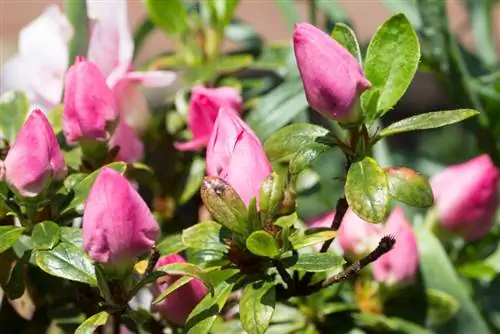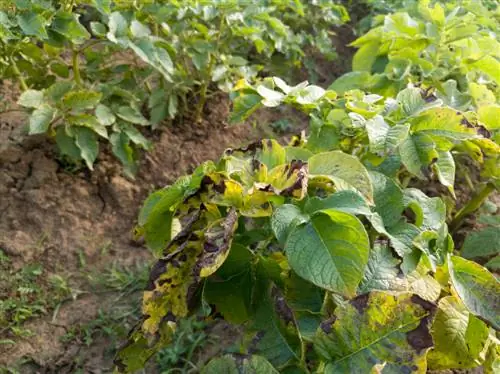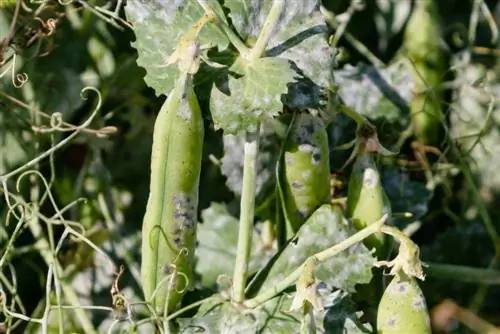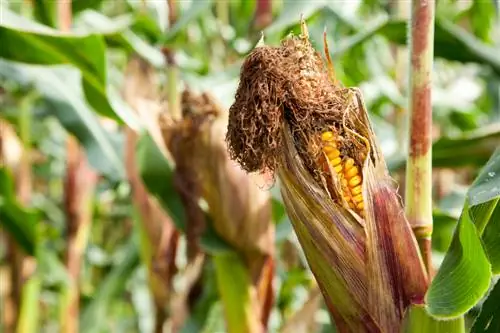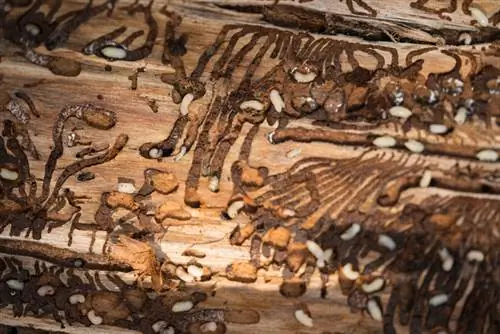- Author admin [email protected].
- Public 2023-12-16 16:46.
- Last modified 2025-01-23 11:20.
Basically, the Japanese azalea, like all azaleas and rhododendron species, is a very robust plant. However, it can also be attacked by various pathogens and pests.
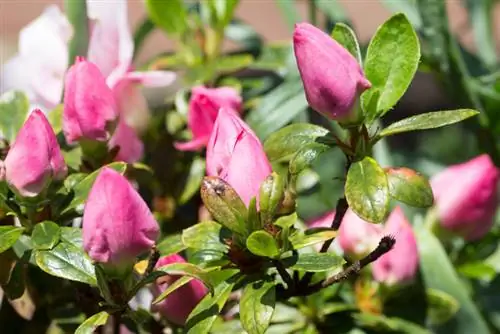
What diseases can affect Japanese azaleas?
Japanese azaleas can be affected by deficiency diseases such as iron deficiency chlorosis and nitrogen deficiency, which lead to leaf discoloration. Fungal or viral infections such as leaf spot and verticillium wilt are other dangers. Pests such as rhododendron bugs and rhododendron leafhoppers can also cause problems.
Deficiency diseases
Deficiency diseases are initially shown by leaf discoloration. Only if the cause is not eliminated after the first signs, stunted growth or deformed shoots, leaves and flowers follow - although the latter can also not occur.
Iron deficiency chlorosis
Chlorosis is shown by the yellowish leaves. Typically, however, the leaf veins remain bright green. An iron deficiency occurs very often when the pH value of the soil is too high and the roots cannot absorb enough of the mineral - calcareous soil interferes with the absorption and metabolism of iron.
Nitrogen deficiency
If there is a lack of fertilization and/or the soil is too firm and impermeable to air, strong yellowing of the leaves indicates a lack of nitrogen. This can be eliminated with the gift of blue grain (€38.00 on Amazon).
Fungal or viral infections
Leaf spot diseases on azaleas are also quite common. These appear as yellowish or dark brown, usually irregularly rounded spots that spread quickly and can also spread to the shoots. Various fungi or viruses can be responsible for this phenomenon, with the mosaic virus being particularly worthy of mention. In all cases, only cutting back affected parts of the plant helps.
Beware of wilt disease
The dreaded verticillium wilt also occasionally attacks azaleas. In this case, quick action can sometimes save the plant. However, it is not enough to simply cut back the affected plant; you must also dig it up and carefully remove the soil clinging to the roots. The pathogen sits in the soil and attacks the azalea from there. As a rule, however, the only solution is to dispose of the diseased azalea. Make sure not to plant any more verticillium-sensitive plants at this point or to replace the soil generously.
Common Pests
Pests don't stop at the Japanese azalea either.
Rhododendron bug
The rhododendron bug (Stephanitis rhododendri and Stephanitis obertii) is initially noticeable through yellowish or greenish leaf spots. If there is an infestation, remove affected leaves - especially before winter.
Rhododendron cicada
Cicadas are leaf sap suckers, but basically don't cause too much damage. They are only dangerous as carriers of certain pathogens such as bud rot. Hang yellow boards in June/July to combat them.
Tip
Due to the shady and therefore often damp location of the Japanese azalea, the leaves can occasionally be covered with a greasy, green coating. This can be easily wiped off. These are algae. To combat this, you need to provide more light.

